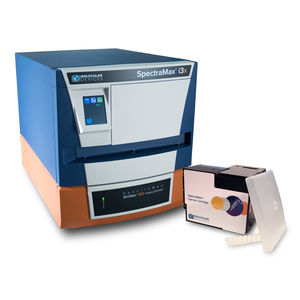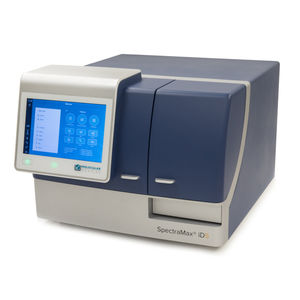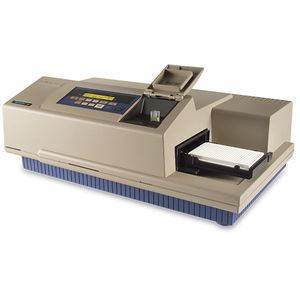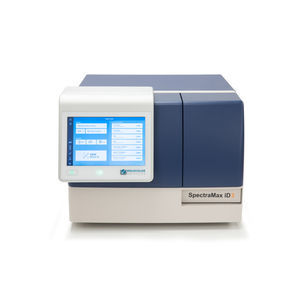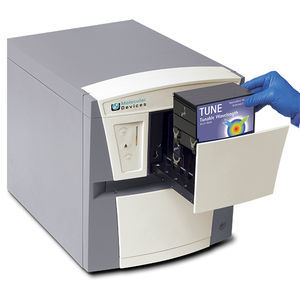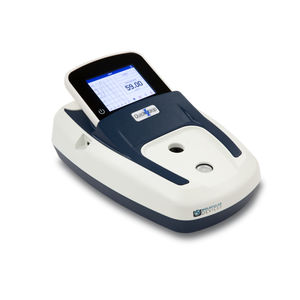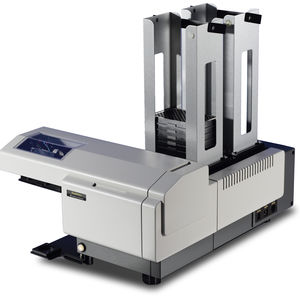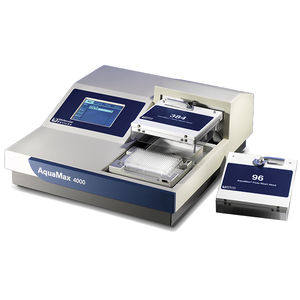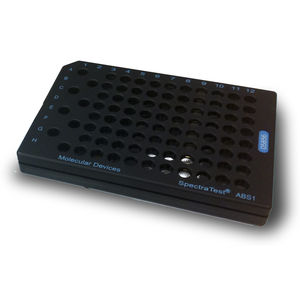
- Laboratory
- Immunology
- Fluorescence microplate reader
- Molecular Devices

- Products
- Catalogs
- News & Trends
- Exhibitions
Fluorescence microplate reader Gemini™ XPSfor molecular biologyfor protein quantificationfor DNA quantification
Add to favorites
Compare this product
fo_shop_gate_exact_title
Characteristics
- Detection mode
- fluorescence
- Applications
- for molecular biology, for protein quantification, for DNA quantification, ELISA
- Number of wells
- 384-well
- Result display time
15 s
Description
The Gemini™ XPS and EM Microplate Readers with dual monochromators provide a flexible environment to determine the optimal excitation and emission settings for fluorescence intensity assays. Multiple-point well scanning optimizes cell-based assay sensitivity. Comparison of relative fluorescence units (RFUs) between samples is allowed by a unique calibration against an internal standard. Temperature-sensitive reactions are monitored with consistent temperature regulation from ambient to 45°C.
Eliminate changing out filters
Eliminate the need for identifying, purchasing, and changing out filters. Dual monochromators provide excitation and emission wavelength selection between 250-850 nm.
Measure more accurately
Well scanning reports fluorescent measurements from a single point in the center of a microplate well to multiple points across a tissue culture well.
Avoid losing high signals
Avoid losing high signals to detector saturation and find the correct reader settings with our patented Auto PMT Optimization System.
Features
Top-read capability
The top-reading Gemini XPS Microplate Reader measures fluorescence on a variety of sample formats from 6- to 384-well microplates in endpoint, kinetic, spectral scan, and well-scan modes.
Top- and bottom-read capability
The top- and bottom-reading Gemini EM Microplate Reader measures fluorescence on a variety of sample formats from 6- to 384-well microplates in endpoint, kinetic, spectral scan, and well-scan modes.
Catalogs
Related Searches
- Immunoassay analyzer
- Clinical diagnostic immunoassay analyzer
- Tabletop immunoassay analyzer
- Microplate reader
- Absorbance microplate reader
- 96-well microplate reader
- Immunoassay microplate reader
- Protein immunoassay analyzer
- ELISA microplate reader
- Microplate washer
- Automated microplate washer
- Platform immunoassay analyzer
- ELISA microplate washer
- Molecular biology microplate reader
- ELISA immunoassay analyzer
- Fluorescence microplate reader
- Absorbance multi-mode microplate reader
- Fluorescence multi-mode microplate reader
- Multi-mode microplate reader
- Programmable microplate washer
*Prices are pre-tax. They exclude delivery charges and customs duties and do not include additional charges for installation or activation options. Prices are indicative only and may vary by country, with changes to the cost of raw materials and exchange rates.


